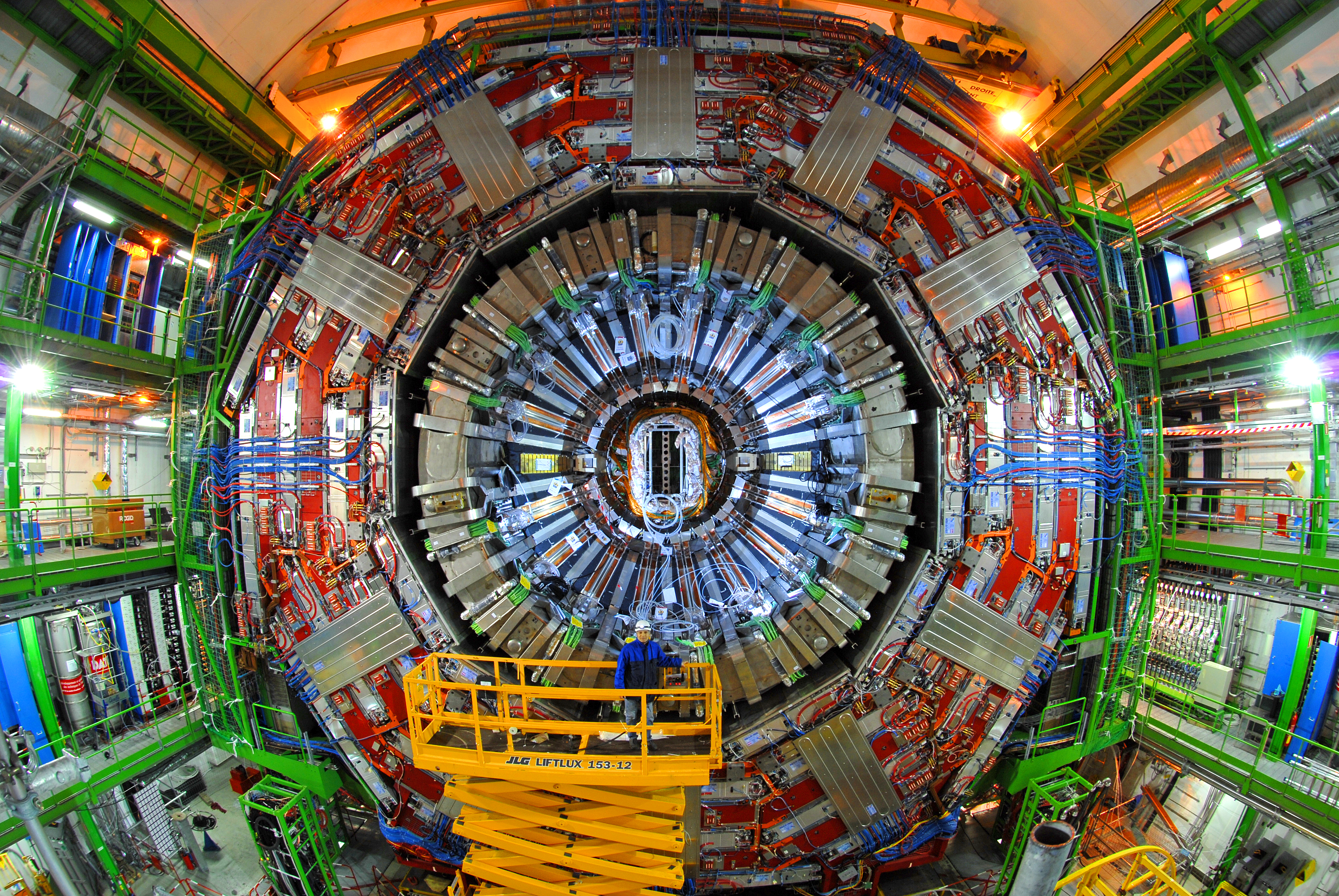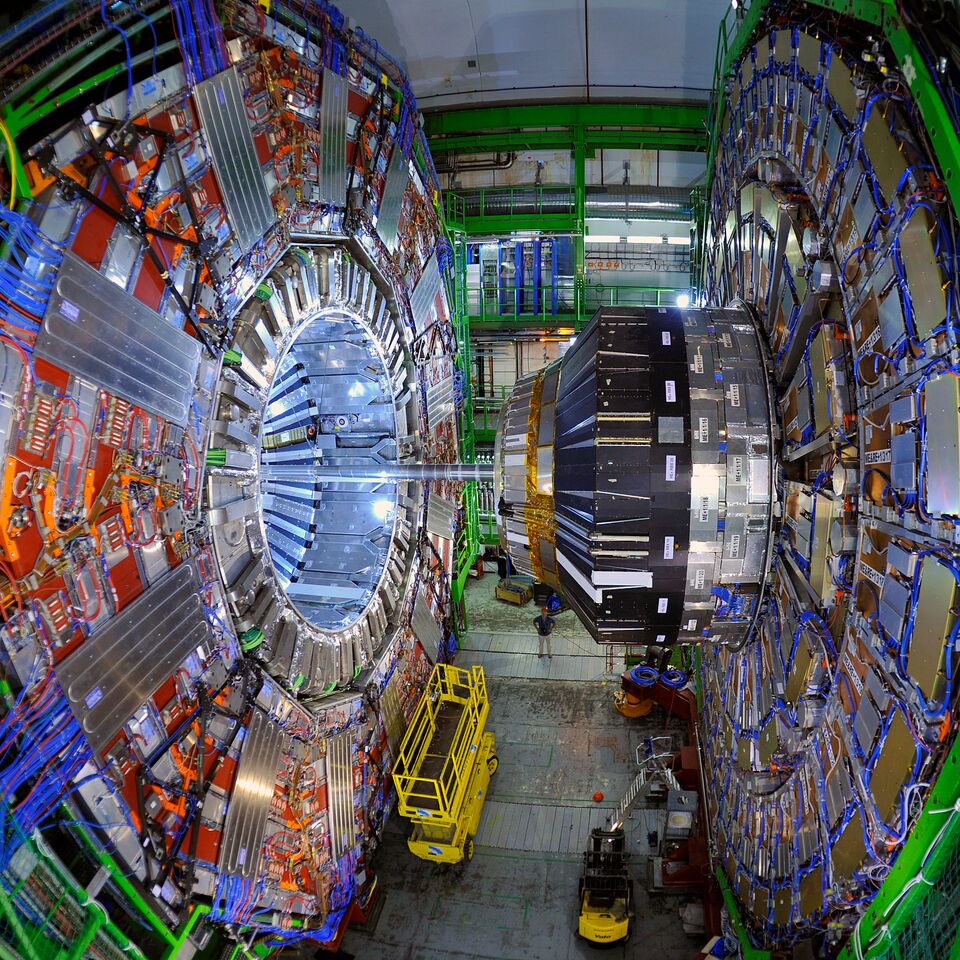An observation made by the CMS experiment at CERN unambiguously demonstrates the interaction of the Higgs boson and top quarks, which are the heaviest known subatomic particles. This major milestone is an important step forward in our understanding of the origins of mass. Physicists at the University of Zurich made central contributions by incorporating sophisticated data analysis methods that allowed this benchmark to be reached much earlier than expected.
In April 1995, the CDF and D0 experiments at the Fermilab’s Tevatron announced the discovery of the heaviest so far known particle, the top quark. Almost 20 years later, in July 2012, two of the experiments at the CERN’s LHC, ATLAS and CMS, published independently the discovery of the Higgs boson, the particle assumed to be responsible for generation of the top quark mass. Results from the CMS collaboration have just been published in the journal Physical Review Letters, providing the most definitive measurement of the interaction between the Higgs boson and the top quark.
Higgs boson and top quark-antiquark pair produced
The Higgs boson interacts only with massive particles called fermions, with a strength of interaction (known as coupling) proportional to the fermion mass. While the decay to many different fermions have been observed, the decay into top quarks, the heaviest known fermions, is kinematically impossible. Alternative routes for probing the nature of the Higgs-top interaction are needed. One is through the production of a Higgs boson and a top quark-antiquark pair, the so-called “ttH production” process. A recent publication from the CMS collaboration establishes the observation of ttH production with a significance exceeding five standard deviations (considered the gold standard) for the first time. In addition, the ATLAS collaboration just submitted new results for publication including more data from the ongoing LHC-run. In doing so, CMS and ATLAS have accomplished one of the primary goals of the LHC physics program.
New techniques speed up data extraction
The extraction of the ttH events from the LHC data is challenging as there are many mundane type of events that can mimic them. Identifying these events requires measurements from all CMS subdetectors, which makes the reconstruction quite complex. The team of Prof. Florencia Canelli of the Department of Physics at the University of Zurich developed, in collaboration with colleagues from ETH, sophisticated techniques that allowed CMS to increase the sensitivity to these events. As consequence, this milestone has been passed considerably earlier than expected. «The development of these techniques also open the possibility of increasing the sensitivity in many other areas of research at the LHC», says Canelli, who is also co-leading the physics group that studies top quarks.
-

-
CMS detector in a cavern 100 m underground at CERN’s Large Hadron ColliderPhoto by CERN
Search for physics beyond the Standard Model
The observation of the interaction between top quarks and Higgs bosons is a major benchmark in understanding the Higgs boson’s nature and consequently could provide an important clue to the origin of matter. While the measured coupling is consistent with the Standard Model expectation, the precision of the measurement has a large enough uncertainty to still leave room for contributions from new physics. As more data is collected at the LHC, the precision of this coupling will be improved. «We are now very curious to know if the Higgs boson fits the description in the Standard Model or if it reveals the presence of new physics», says Canelli.
Literature:
A. M. Sirunyan et al. (CMS Collaboration). Observation of t¯tH Production. Physical Review Letters. June 4, 2018. DOI: 0.1103/PhysRevLett.120.231801
Press release by CERN:
https://www.interactions.org/press-release/higgs-boson-reveals-its-affinity-top-quark
Contact:
Prof. Dr. Florencia Canelli
Department of Physics
University of Zürich
Phone: +41 44 635 57 84
E-mail: canelli@physik.uzh.ch
